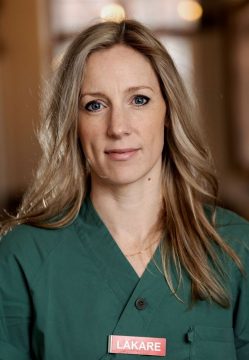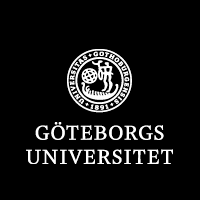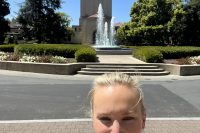DOCTORAL THESIS. It has been shown that the percentage of ankle fractures that undergo surgery could be substantially reduced, from more than 30 per cent to 10 in the most common type of fracture. The key is a clear-cut treatment routine that benefits both patients and caregivers, according to a doctoral dissertation at the University of Gothenburg.
This thesis examines the way ankle fractures are treated in Sweden and the way this is impacted when more structured treatment guidelines are introduced. At the present time, national guidelines for the treatment of ankle fractures are lacking, in both Sweden and many other countries.
Ankle fractures are one of the most common fracture types. People of all ages are affected, but certain groups are impacted more than others. The mapping that has been performed in one of the studies in the thesis is based on 57,433 ankle fractures registered in the Swedish Fracture Register in 2012-2022.
“We found that women suffer more ankle fractures than men and that most injuries occur during the winter and are the result of a same level fall, like slipping on ice or snow, for example,” says Emilia Möller Rydberg, a PhD student at the Sahlgrenska Academy at the University of Gothenburg and a specialist in orthopaedics at Sahlgrenska University Hospital in Mölndal.
Several advantages of new treatment routines for ankle fractures
A serious ankle fracture may require repeat surgery, while a less severe injury, more like a sprain, can be treated with an elastic bandage. The dissertation describes the difficulties involved in classifying the injuries and how this opens the door to the judgements of individual doctors and the routines that are customary at an individual hospital.
Structured treatment routines are designed to create more reliable, fairer assessments. When Emilia Möller Rydberg studied patient data from the period before and after the introduction of guidelines at Sahlgrenska University Hospital in 2017, the results were clear.

“We found that we reduced the number of surgeries without any increase in complications. The new treatment routine has also led to a reduction in the number of X-ray examinations, shorter plaster cast times and an increase in the number of patients permitted to exert full weight-bearing on their plaster casts,” she explains.
Fewer unnecessary interventions and less suffering
One aspect in conjunction with the most common type of ankle fracture, the actual ankle bone, involves differentiating stable fractures from unstable ones, linked to the degree of ligament injury. In stable fractures, surgery could be avoided to a greater degree and the percentage of surgery fell from just over 30 per cent to 10. At the same time, the percentage of patients permitted weight-bearing on their injured foot rose from 41 per cent to 84.
“It is to be hoped that these studies will lead to the more structured care of ankle fractures in the future and a reduction in the number of unnecessary operations. This has the potential to save the resources of the healthcare system and make the care of patients suffering ankle fractures more equal,” says Emilia Möller Rydberg.
“Avoiding an unnecessary operation, having a plaster cast for a shorter time and being able to put weight on your foot also has the potential to alleviate suffering for patients and speed up their return to work and activities. We shall be examining this in greater detail in the future,” she concludes.
Title: On ankle fractures, https://hdl.handle.net/2077/74155
BY: MARGARETA GUSTAFSSON KUBISTA











